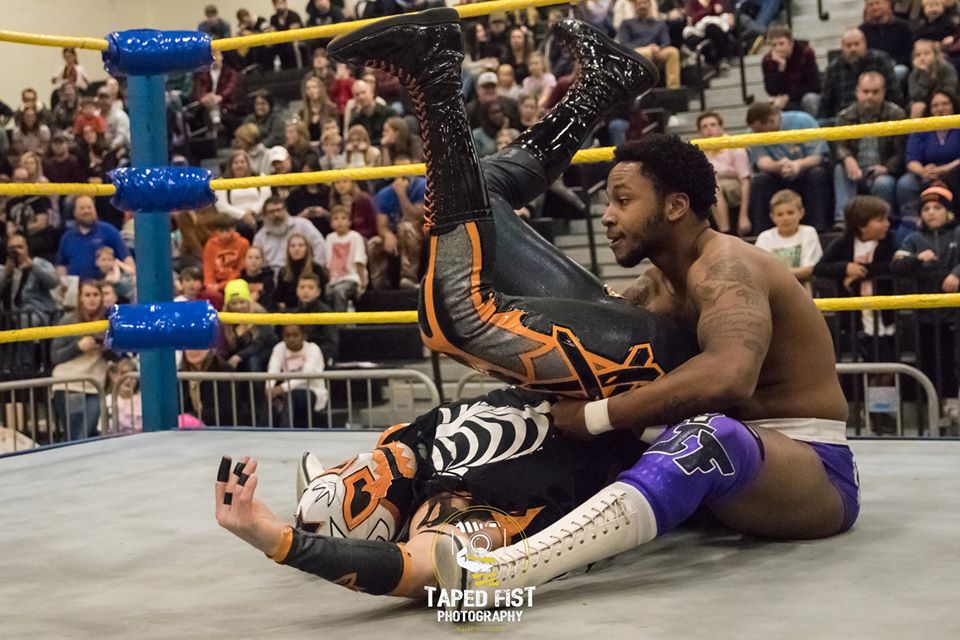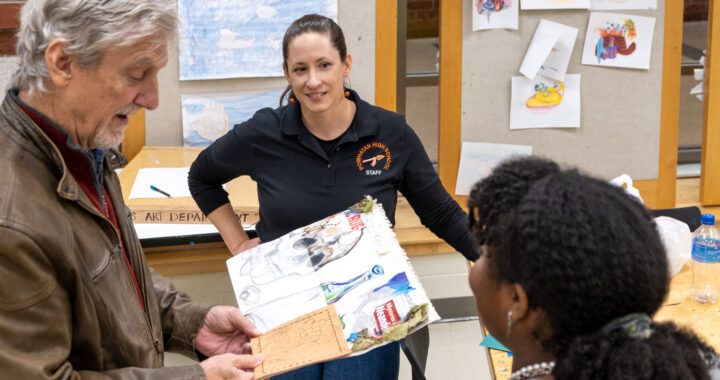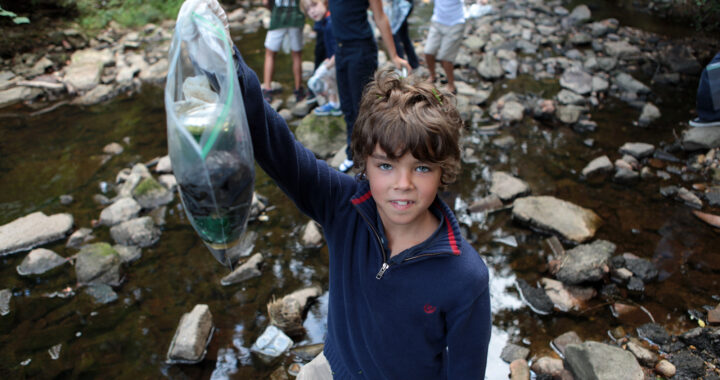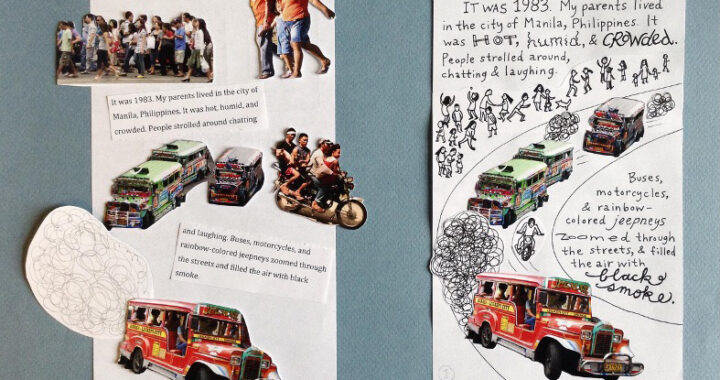Dear Diary,
The kids have lost it! They are bouncing off of the walls, literally. If they try to body slam each other one more time off of the sofa, I am going to lose it. Send help…

Can your teaching artist do this? Flat Rock Elementary’s Winter Wipeout held in December 2019 at Powhatan High School. Photo credit: Taped Fist Photography
Wrestlers as Storytellers
Need a solution to your kids growing weary of being inside? Maybe professional wrestling is the answer.
This year we embarked on a project using professional wrestling as a model for storytelling and the writing process in our fourth-grade classrooms. Professional wrestlers are masters at telling stories to an audience. Everything they say, do, and wear is all carefully thought out to help advance their characters and stories.
We found that by analyzing characters from that world, as well as in-ring storytelling, we were able to help our students think in a different way about writing and the elements of a story. The results were incredible. Every student was able to develop their own character and story, with the help of professionals in the field. To top it all off they wrote, hosted, and ran their own wrestling show!
If you are looking for a new and exciting way to provide enrichment in language arts either in the classroom or during distance learning, here are a few lessons that were a part of Heroes Wear Masks, the Partners in the Arts Engaging Creative Thinkers Award grant project implemented in the fall of 2019. These can easily be replicated at home, and everything you need is right here.
Lesson 1: Characters
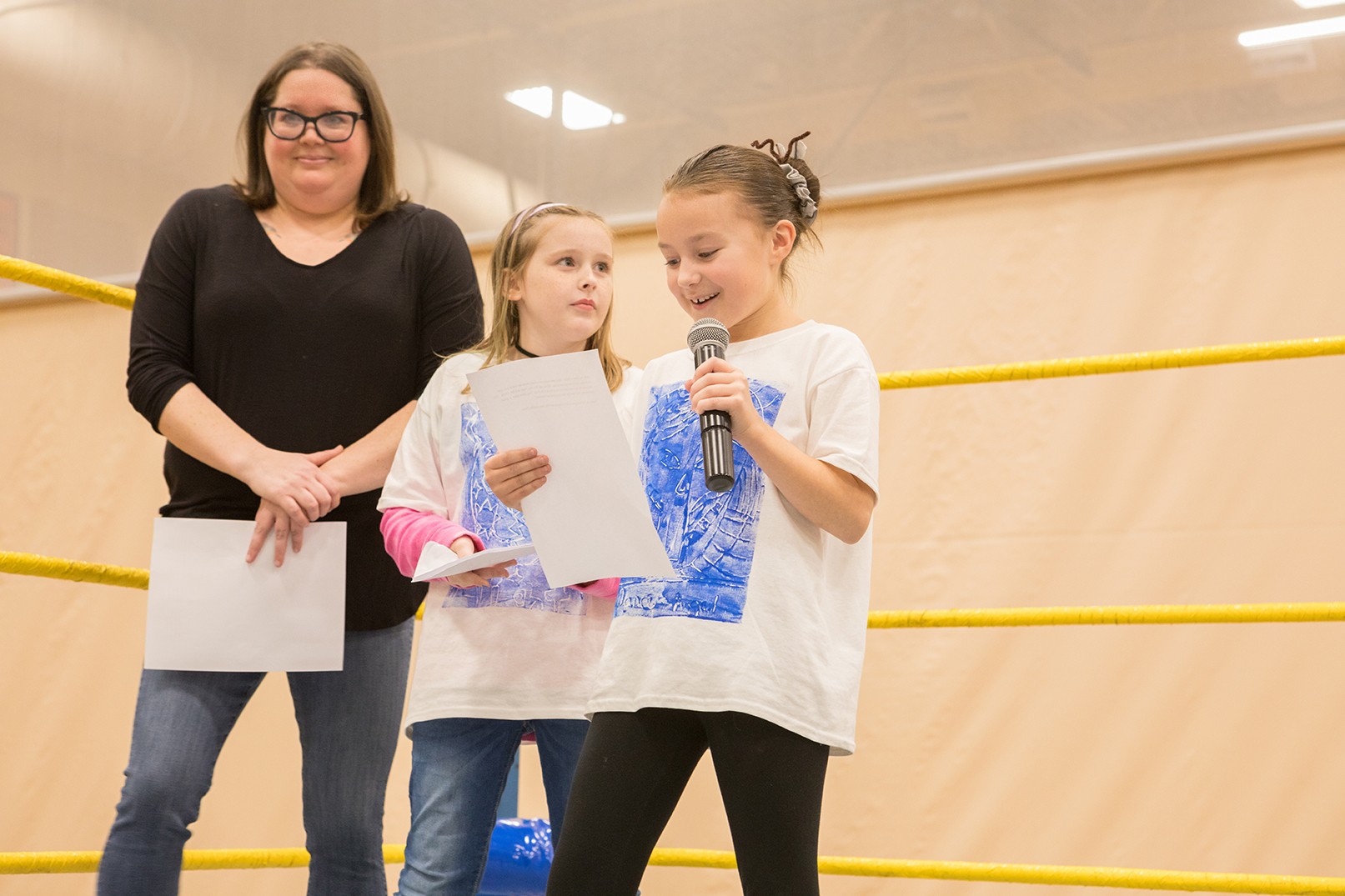
Fourth-graders kickoff the Winter Wipeout. Photo credit: Taped Fist Photography
The world of professional wrestling has a diverse cast of characters. Many of them might remind us of ourselves. Some are more complex, showing more and more of themselves over time. One place to start studying these characters is simply through pictures. When you open up our Wrestling Characters prompts, think about adjectives you might use to describe the wrestlers. See how descriptive you can get. Focus on words that show who they might be as a character versus just telling. In our classroom, we used a sketchbook to create a word bank of all of these descriptive words. If you have a sketchbook that’s great! If you don’t, anything will work. As you and your children look at the pictures, be sure to take note of everything you see.
- What are they wearing?
- Notice anything about the colors?
- What does their body language say?
- Are they making any facial expressions that might tell you more about who they are?
Lesson 2: Elements of a Story
People all over the globe are drawn to wrestling because of the stories these performers tell in the ring. There are tales of good versus evil, inner conflict, and overcoming adversity. Wrestlers tell stories through the words they choose when speaking and how they move during in-ring action. It is all a perfectly choreographed dance that brings their stories to life.
Check out the wrestling videos linked to the photos in the Wrestling Story Elements prompts and challenge your children to find all the elements of a story. What are the wrestlers saying? What are they doing in the ring? Are there clues to help you figure out where they are and when the match is taking place? How do the wrestlers feel about one another? What do you think the conflict between them might be? After you have watched each video, have them write a quick summary of the story that was being told as they perceived it.
Putting it all together
After taking a closer look at characters and the elements of a story, it’s time to create your own character. This is the fun part. Have your children sketch out their character and run wild with it! There is a whole world of characters in wrestling, and everyone has a seat at the table. Let them take the time to draw their ring gear and all of those small details you noticed when making your word bank. This was my favorite part of the classroom activities. I learned so much about each student by seeing where they saw themselves in the wrestling world.
Every character needs a good name and bio, and now you have all of the tools. You have learned about characters, the story elements, and have created a visual of what the character looks like.
Time to Write
One easy way we begin the writing process in our classroom is with a 4-Square Organizer. In the middle, you will put the character’s name. In the four boxes surrounding the name, have your children put an adjective that describes their character. Refer back to those word banks you created. There might be some great words you can use.
From here you have the perfect outline for a paragraph or story. You can simply create a topic sentence, and supporting sentences using the adjectives you have written. If you want to tell a bigger story, take some time to add details to each adjective box about why that word describes their character. Now you have a 4 paragraph story! Just create a paragraph for each box using the details written in it.
I hope this lesson brings an engaging way to learn about language arts into your homes during this new and uncharted territory. I know we had a blast in the classroom. Happy writing!

Lucas Calhoun, pictured, worked with fourth graders during their reading block for 6 weeks. Photo credit: Taped Fist Photography
Guest post by Robin Hagy, a 4th-grade teacher at Flat Rock Elementary School in Powhatan, Virginia. Robin Hagy has been teaching for 13 years. “I have been lucky enough to work with Partners in the Arts on two different projects. I love giving students the opportunity to think about things in a new and different way.” Outside of school, she spends way too much time making playlists and buying craft supplies.
Partners in the Arts (PIA) awarded Engaging Creative Thinkers (ECT) grants to teachers from 1994 to 2021. These grants made possible over 200 innovative, interdisciplinary projects in Richmond area schools. Since then, the PIA consortium has supported both educator professional development and in-school project implementation through the Joan Oates Institute for Integrated Learning.
The ECT Awards provided opportunities for teachers to reach all students across content areas, while developing critical thinking, creativity, collaboration, communication, and citizenship. ECT projects engaged a class, grade-level or whole school and connected teachers, students, families, and the community.
